The original portion of the Alabama State Capitol Building was completed in 1851, though subsequent additions have been made. In 1861 the Confederate States of America (CSA) were created in the Senate Chamber, and CSA President Jefferson Davis was sworn in on the steps. It temporarily served as the Confederate Capitol, before the CSA relocated their capital to Richmond, Virginia.
100 years later, Governor George Wallace raised the Confederate Battle Flag over the capitol dome on the date of his meeting with U.S. Attorney General Robert F. Kennedy to discuss desegregation of the University of Alabama. The flag remained for almost 30 years (!). The capitol building was also the destination of the interrupted “Bloody Sunday” march from Selma in 1965.
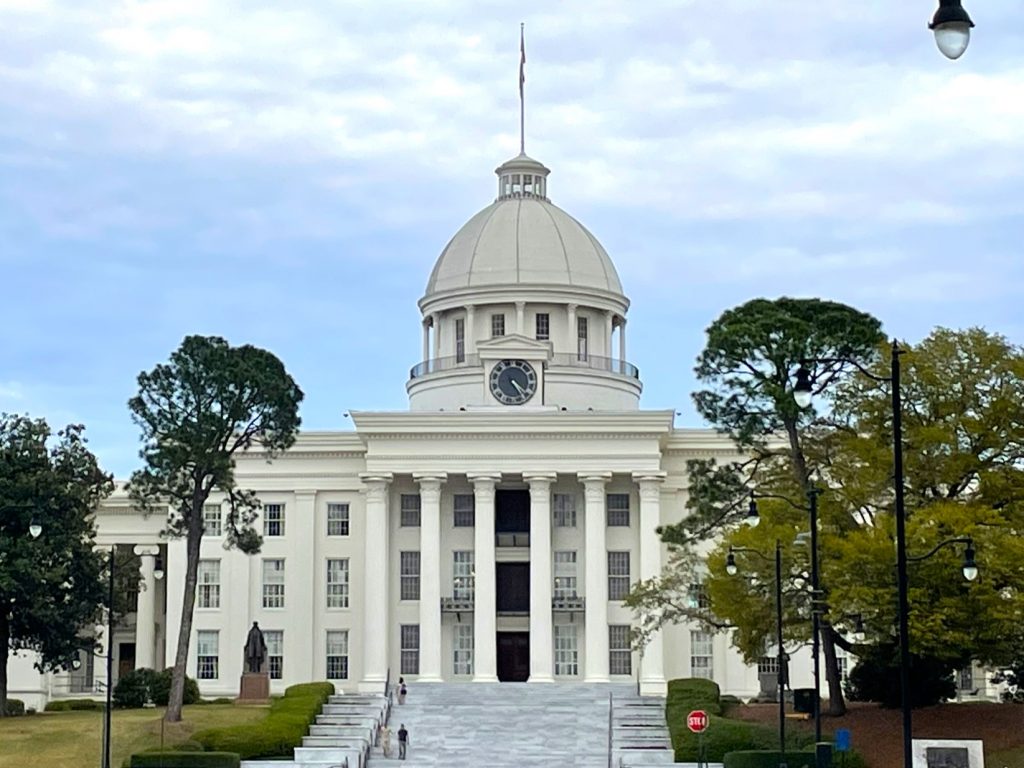
The building is Greek Revival, with 350 feet of front façade and 119 feet to the top of the dome. Though the dome was definitely impressive, most of the rest of the interior was a bit less ornate in comparison to some other capitol buildings we’ve seen.
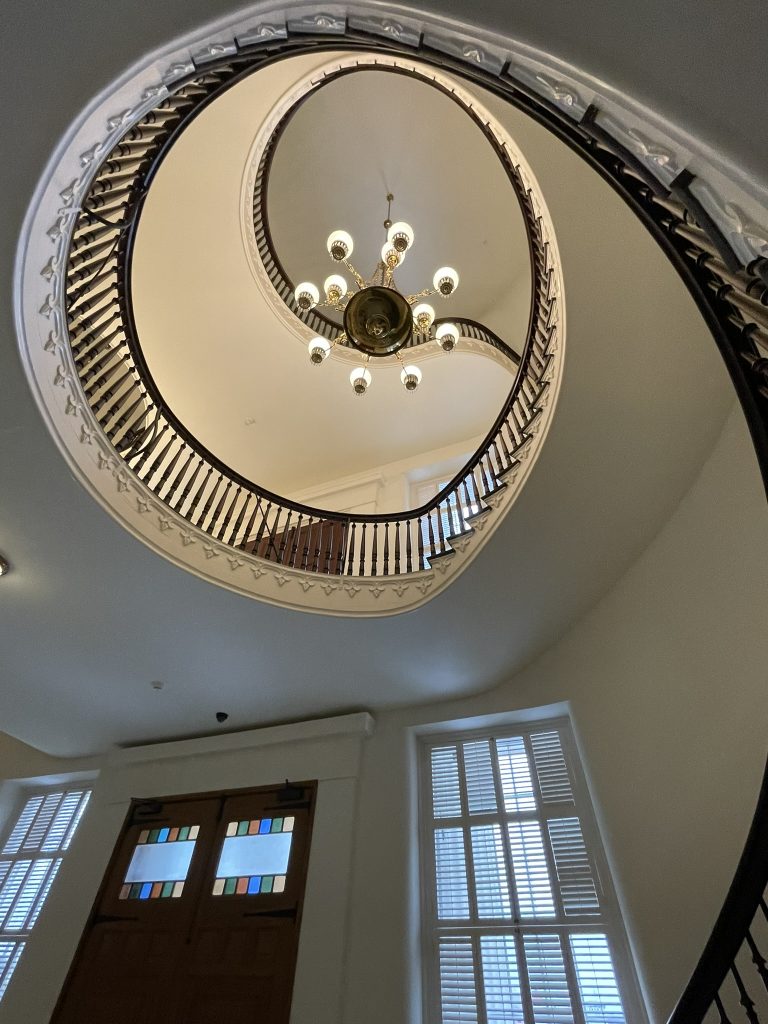
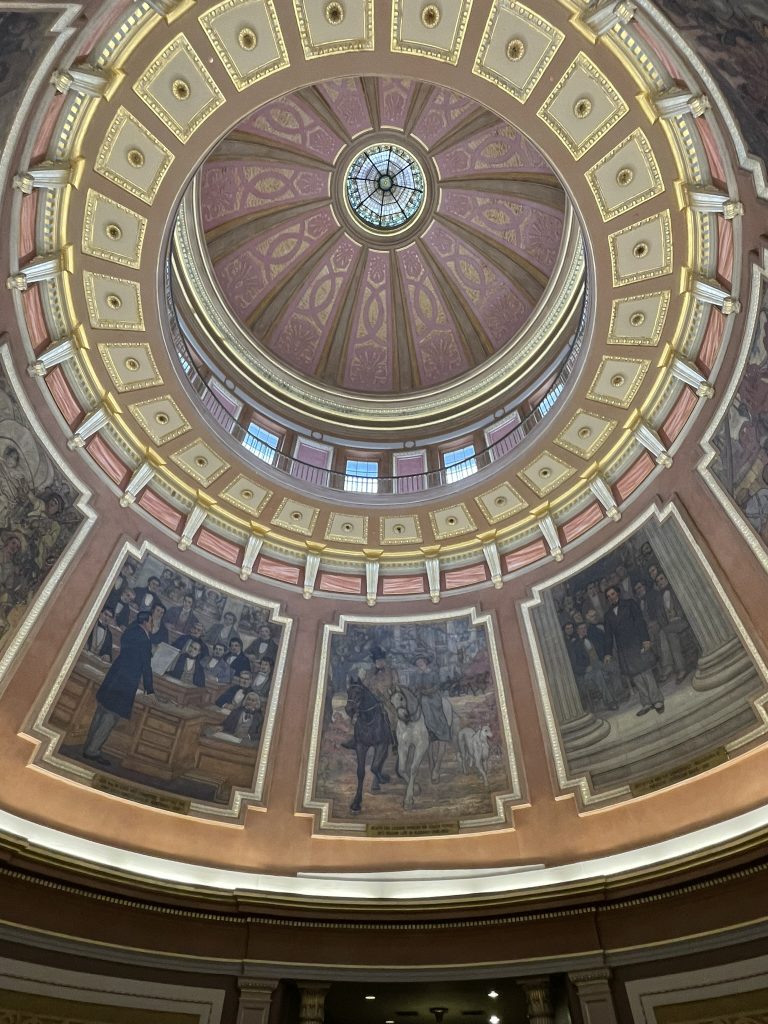
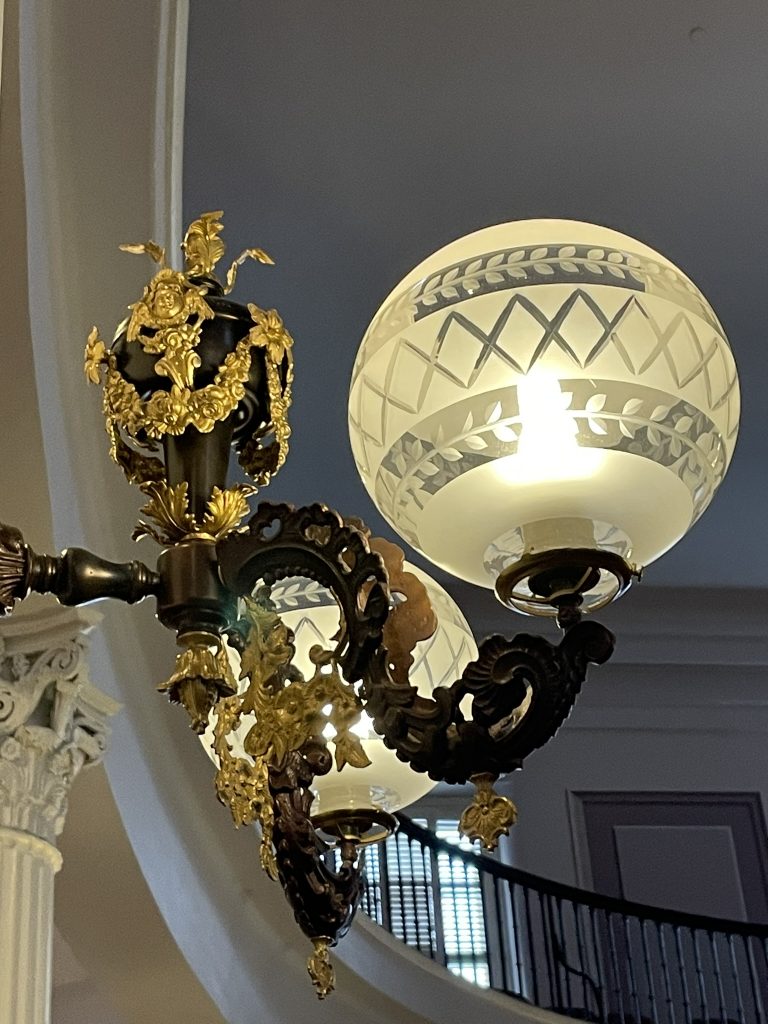
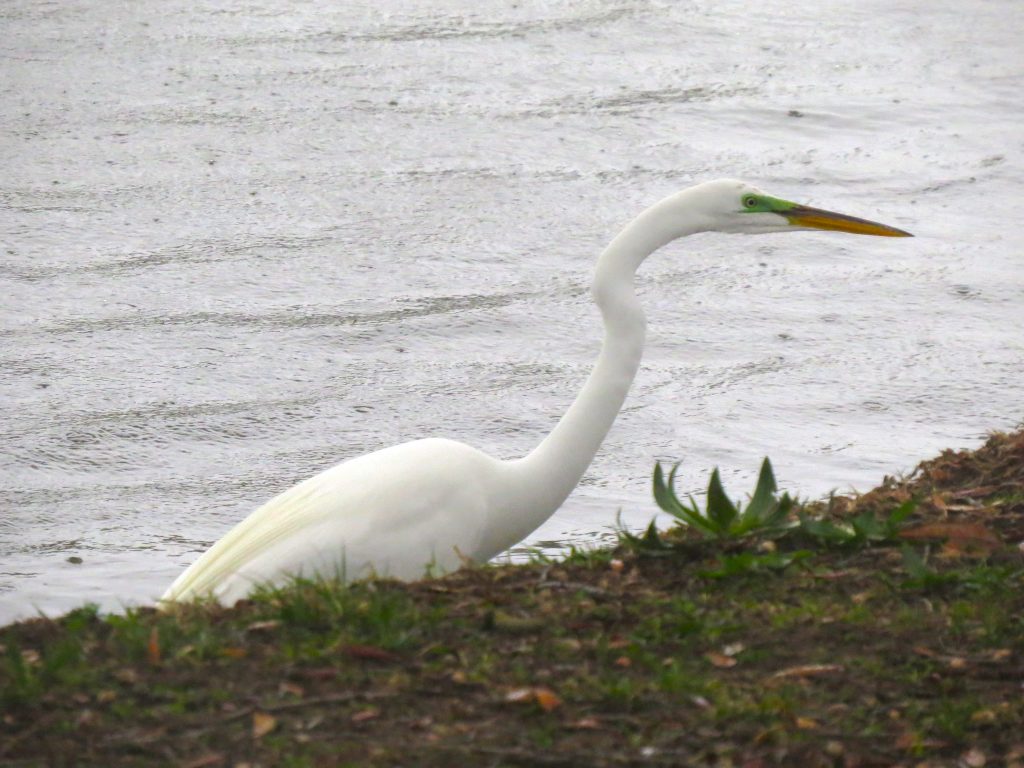

Jackson Lake Island is both a nice birding spot and the a place where you can see a movie set, so why not? The set is from Tim Burton’s 2003 film Big Fish (affiliate link), which Doug had seen and I now have added to my to-watch list. The set features a handful of buildings that were designed to be in a state of decay, and after 20 years they are even more so! The island is also home to a roving pack of goats, who completely ignored us until they were suddenly very interested. I was taking a picture when I felt a gentle bump, only to find a goat in need of a petting!
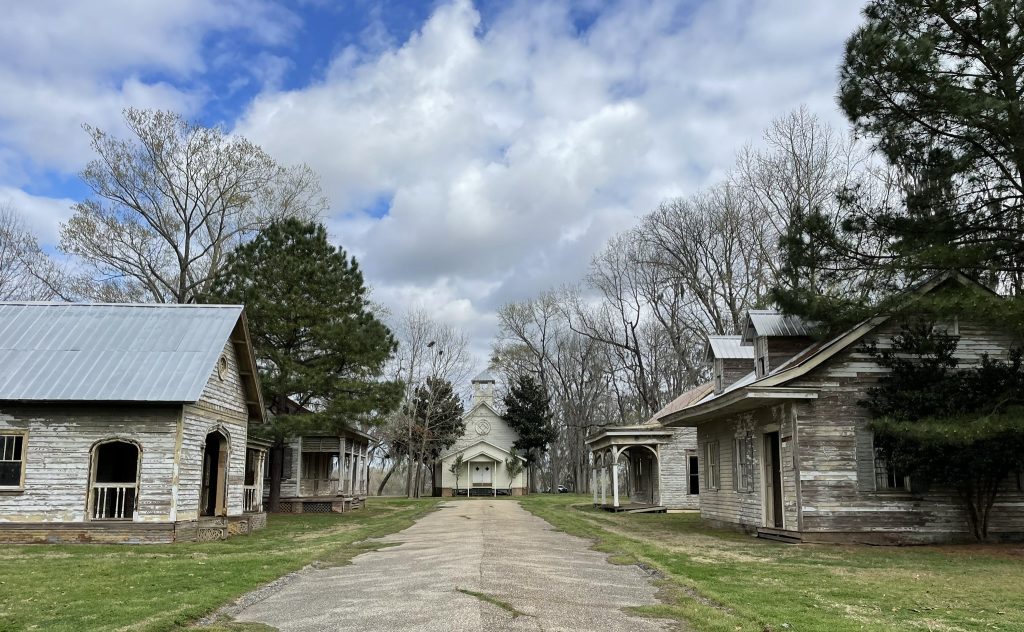

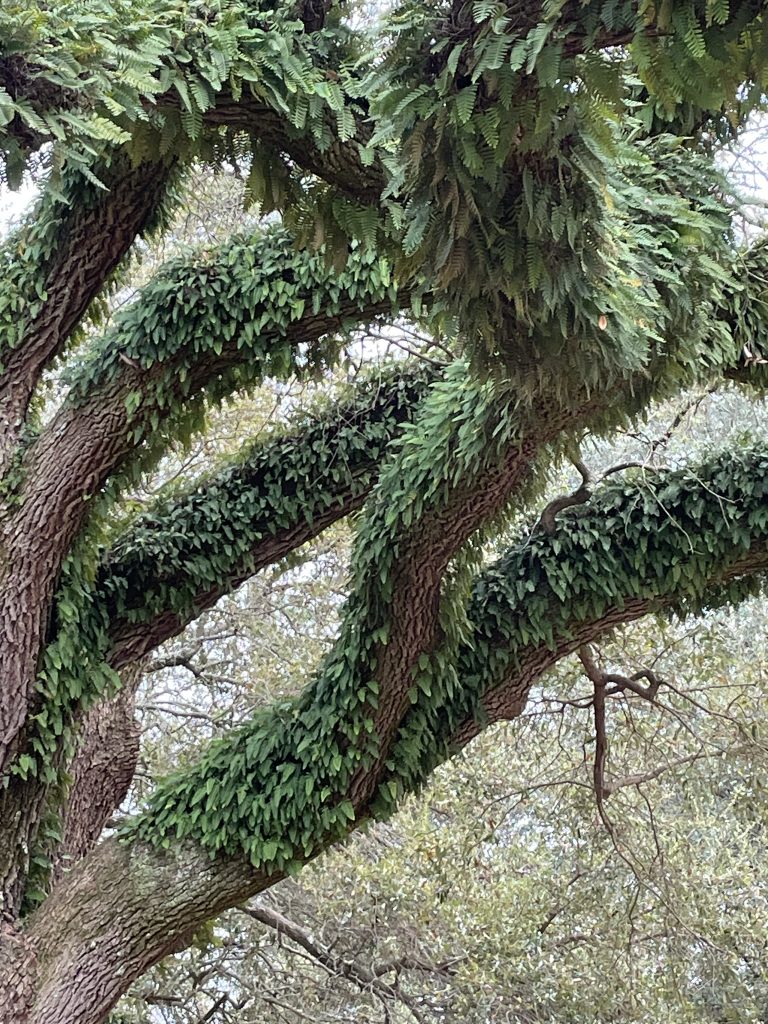

We went to see a talk by Beto O’Rourke, the former Texas Congressman who tried very hard to beat out Ted Cruz for a Texas Senate seat. He is currently on a speaking tour in support of his book We’ve Got to Try: How the Fight for Voting Rights Makes Everything Else Possible (affiliate link). The book topic was very apropos, given our immersion in Civil Rights while in town.
O’Rourke is an extremely dynamic speaker, and we enjoyed the talk very much. Afterwards we listened to the audiobook, which is relatively short and very well done.
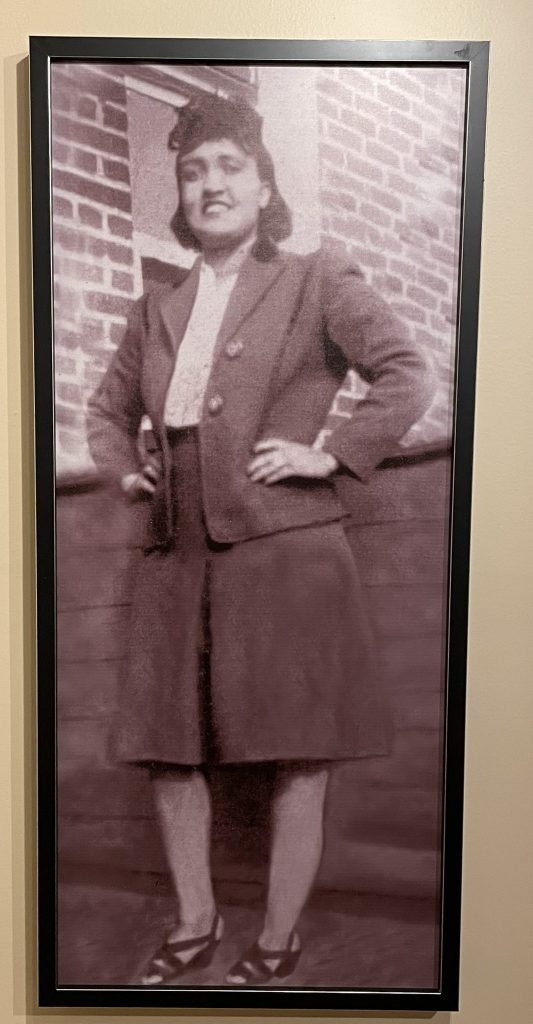
We visited the Legacy Museum at Tuskegee University on our way to Montgomery. We went because of two exhibits that were on display, though in the end we were a bit underwhelmed by them both.
The first was on Henrietta Lacks, the subject of the renowned book The Immortal Life of Henrietta Lacks (affiliate link) by Rebecca Skloot. Mrs. Lacks was a poor Black woman with terminal cervical cancer. It turned out her cancer cells were really good at replicating and staying alive, so scientists took her cells and sent them around the world. While her cells were used for a lot of good, it was all done without her knowledge or consent. The book is fascinating and well worth a read.
The second was on the Tuskegee Study of Untreated Syphilis in the Negro Male. In 1932 a “study” began on 400 Black men, who were promised free medical care. What they were not told is that they were actually in a study to learn the effects of untreated syphilis – meaning, they were not actually being treated. Even worse, 15 years into the 40-year ”study,” a cure for syphilis was discovered but not offered to the men. It’s a horrific tale, one we got a more in-depth look at by listening to The Tuskegee Syphilis Study (affiliate link) by Fred D. Gray, who was an attorney who successfully sued for compensation on behalf of the men.
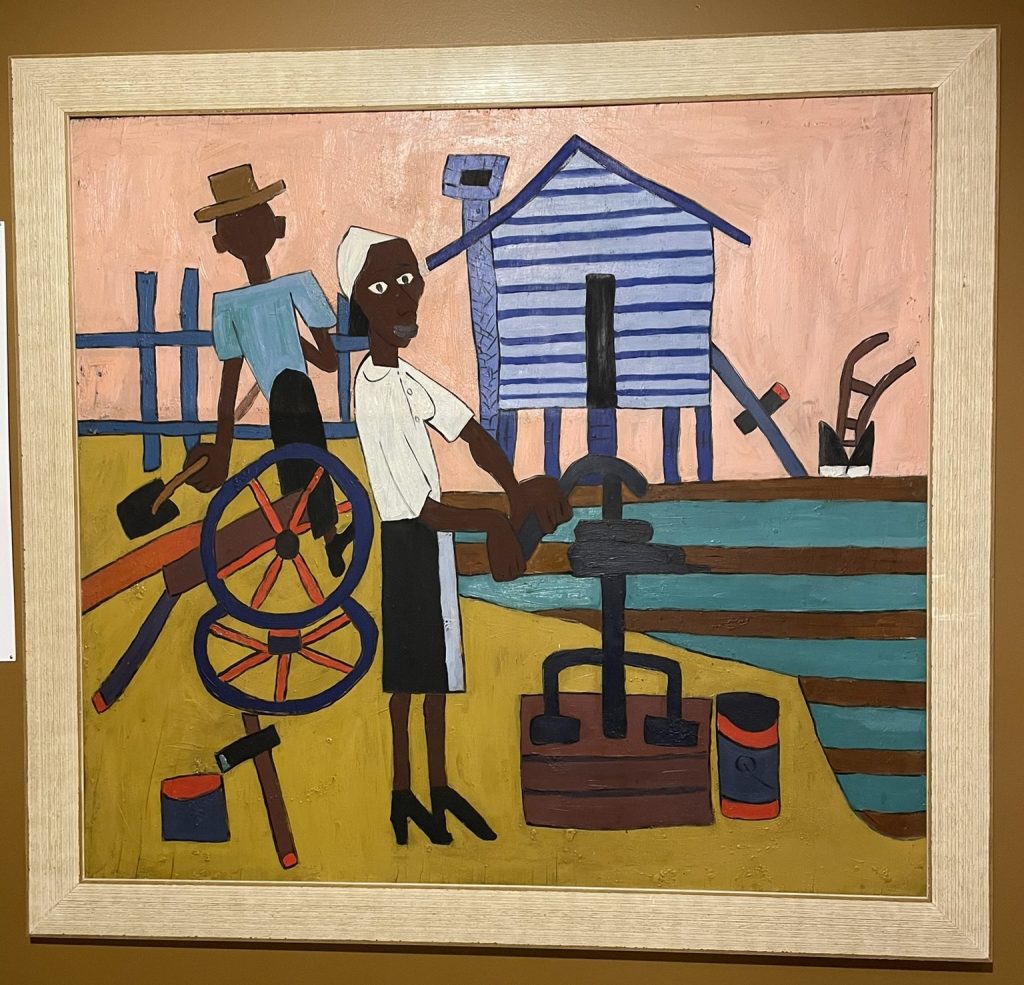
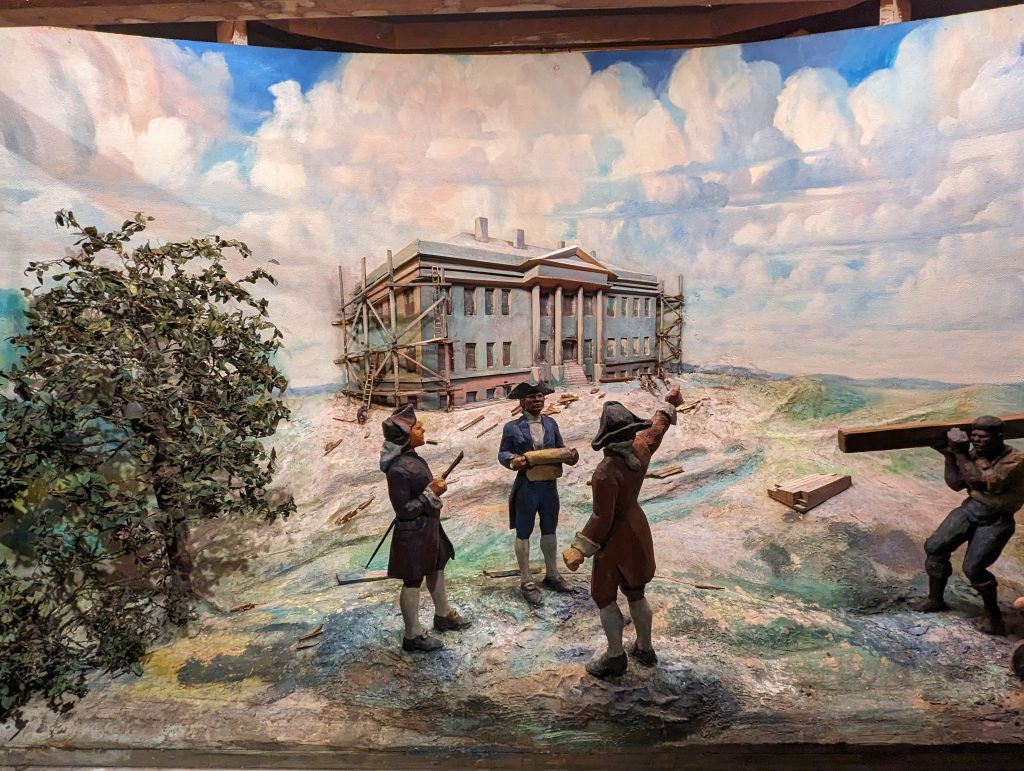
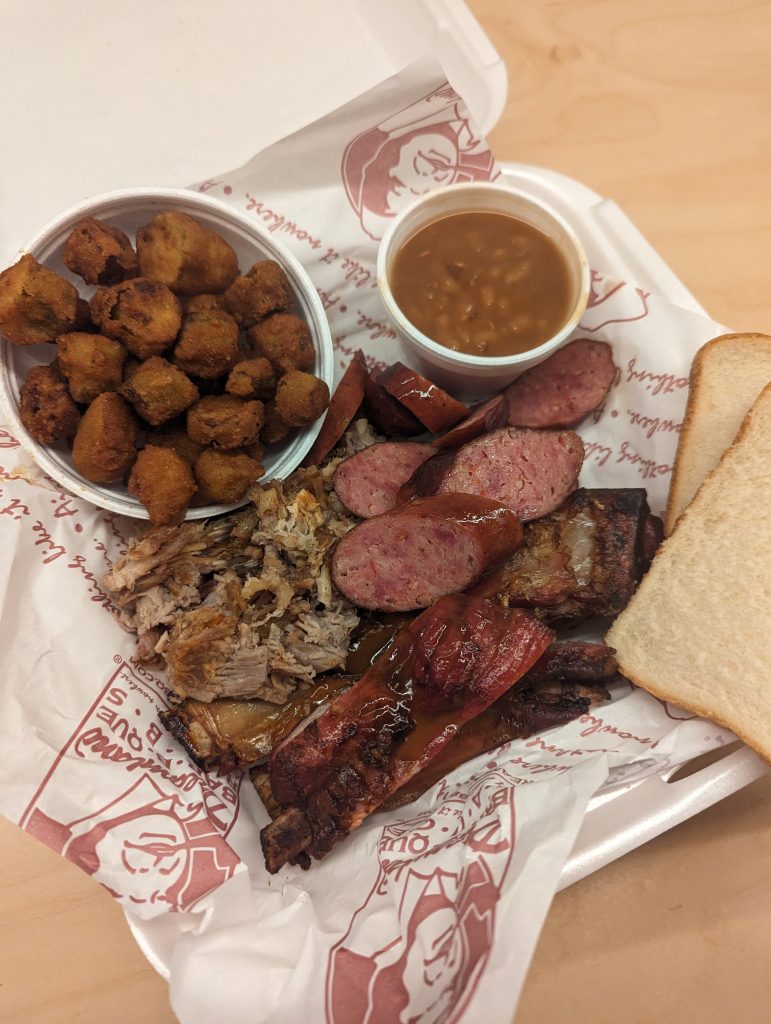
Dreamland Bar-B-Que has several locations, Doug got take-out from their Montgomery restaurant: a platter with pulled pork, ribs, and sausage, and fried okra and baked beans on the side. He thought it was pretty good.
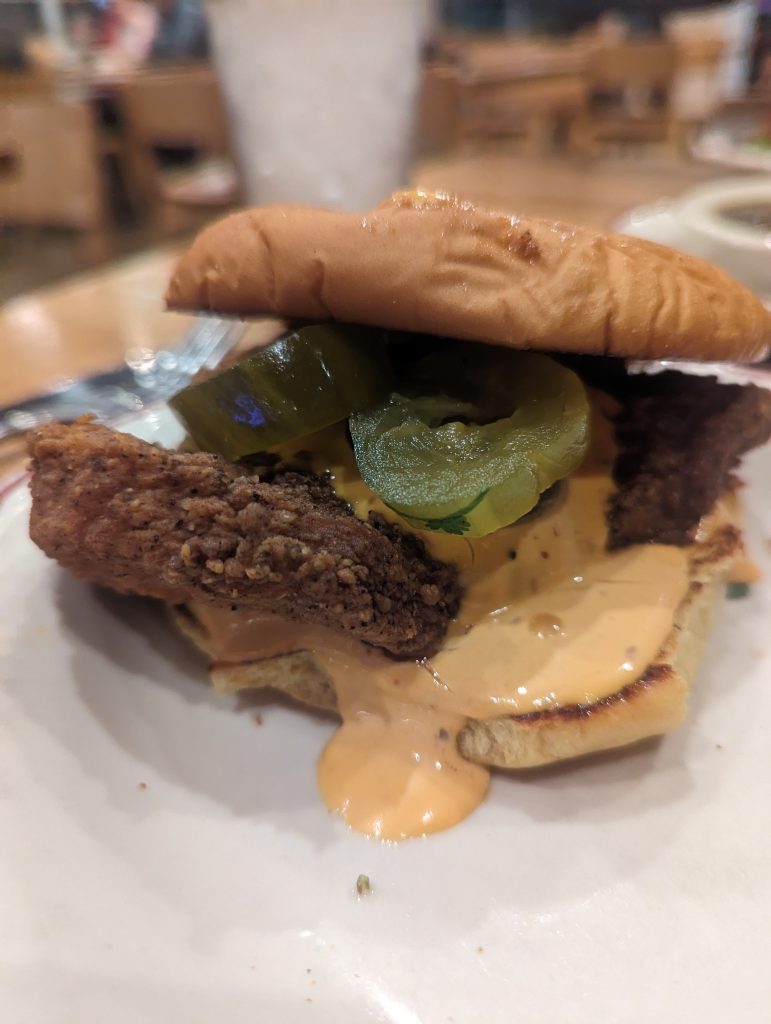
The Little Donkey Cafe in Montgomery is a Mexican restaurant that is famous for its fried chicken, so Doug had a sandwich. He proclaimed that it was excellent!
Angel from Montgomery by Bonnie Raitt is a favorite of mine. It’s a beautiful, haunting, heartbreaking song.
Montgomery in the Rain by Hank Williams, Jr. seemed an appropriate listen after our visit to the Hank Williams Museum, but alas, it did nothing for me.



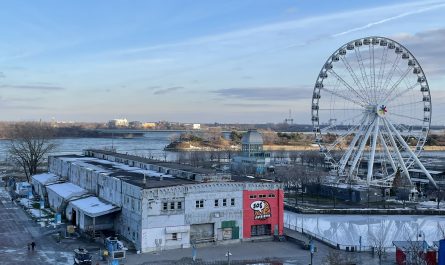

One thought on “Scenes from Montgomery, Alabama”